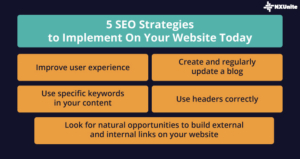Search Engine Optimization for Nonprofits—Nonprofit Catalog
Your nonprofit website is a great asset for marketing your mission. But it won’t do your organization much good unless people can find it! Search engine optimization is an essential tool for driving traffic to your website. It can help you connect with donors, volunteers, and people interested in your cause.
What is search engine optimization for nonprofits?
Search engine optimization is the process of fine-tuning your nonprofit website to perform better on search engines like Google so that more people will see your website and be able to engage with it.
Search engines like Google use bots to crawl every web page and determine where it will rank on search engine results pages (SERPs) based on a variety of factors. While some factors used to determine rankings are withheld from the public, we do know that quality, keyword usage, page structure, and usefulness to visitors all play a role. Keeping that in mind, it’s worth taking the time to optimize your website in those areas.
Competition with other websites, your location, and technical SEO are a few other elements that can have an impact on a nonprofit website’s SEO. While SERP rankings is a complex topic with numerous variables to consider, just knowing some basic strategies can be a great way to start improving your pages’ rankings.
Why do nonprofits need SEO?
One of the main purposes of SEO is to increase organic traffic. This is the traffic that comes from people who click on your website after putting a search term into a search engine like Google. Organic traffic is different from paid traffic (like Google Ad Grants or other ads) and social traffic, in that your website has to deliver what the user is trying to find.
Additionally, 53% of website traffic is organic traffic, so it’s well worth nonprofits’ time and effort to become SEO savvy. More visibility and brand awareness will lead to more support in a variety of areas. That can mean more volunteers, event attendees, or donations. To support your nonprofit, people need to be able to easily find it.
5 SEO Strategies to Implement On Your Website Today
Don’t let SEO overwhelm you. It’s useful to start with a few SEO strategies, see how well they work out, and then move from there. Here are a few key areas where you can easily implement some easy fixes.

- Improve user experience. A good place to start with user experience is to optimize your website for mobile devices and accessibility. Make sure you’re writing easy-to-read content and breaking up text with images. For example, if you have a blog, it might be worth taking the time to go through your content and update it to make sure the content is easily readable. Streamlining navigation and ensuring that your website loads quickly are also important elements of user experience. If it takes a visitor too long to find important landing pages like your donation page, there’s a good chance they won’t make it to that page.
- Create and regularly update a blog. Regularly creating and sharing content shows search engines your website is active and gives you a good chance to provide value to your visitors. They’ll check back often in hopes of new content if you’re consistent about publishing blog posts relevant to your audience’s interests.
- Use specific keywords in your content. Choose keywords that you won’t have to struggle to compete for and that are highly relevant to your organization and its cause. Use them naturally throughout your web pages. For example, if a nonprofit wants to optimize for the keyword “animal shelter volunteering” then they could create a page called “Upcoming Animal Shelter Volunteering Opportunities” or publish a blog post about volunteering at animal shelters where they could naturally utilize that phrase. These efforts could help the nonprofit improve its SERP rankings for that keyword.
- Use headers correctly. Header hierarchy matters because it helps search engines (and human users) understand the structure of the information on a web page. Headers should be used in sequentially-descending order (H1, H2, H3, and so on) to foster readability. Most website builders provide you the option to classify headers correctly.
- Look for natural opportunities to build external and internal links on your website. Linking to internal content on your website can help show Google how everything connects and keep visitors on your pages longer. Linking to external authoritative websites (and securing links from them) can be a great way to boost your website’s authority. Undertaking these efforts in a natural way, such as by hosting guest blogs, will help you become a better search engine citizen.
So, there you have it—search engine optimization for nonprofits. Use this explainer to get started improving your nonprofit website’s search engine performance today!
Additional Resources
- Nonprofit Catalog – Read up on more nonprofit essentials by exploring our Nonprofit Catalog.
- Nonprofit Web Design Companies: A Guide & Recommendations – Working with a nonprofit web design agency can give your website an edge. Learn more in this article!
- Nonprofit Website Builders: The 11+ Best Providers – Using the right website builder is key when creating your website and optimizing it for search engines. Explore some great options.


